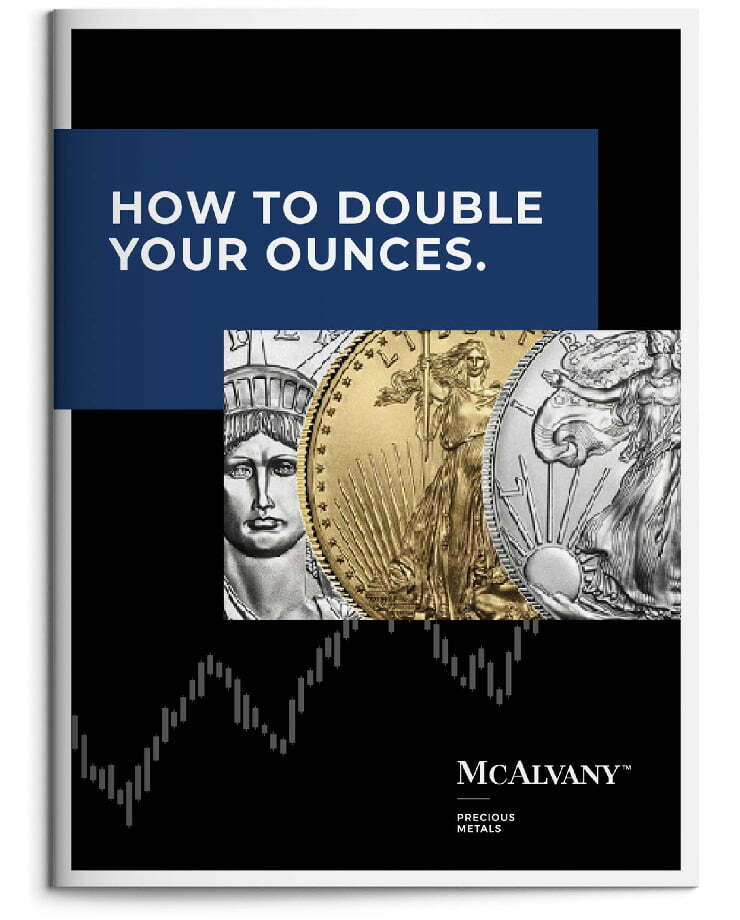Adapt to the New Set of Rules
Last week, it sure felt like peak summer doldrums for markets and the economy. But what a difference a week makes! This week, those doldrums turned right back to impactful market news and important price moves. It was a volatile roller coaster this week, so buckle-up.
After early week strength and new record highs for both the S&P 500 and the NASDAQ 100, the major indexes reversed and closed notably lower on the week as the VIX Volatility “fear gauge” Index launched higher by 36.5%. Gold was higher, but most precious metals complex components were lower. Oil was up, but energy stocks were down. Copper was mercilessly slammed to the tune of a 23.65% drubbing after a Trump copper tariff clarification reversed the previous tariff-related jump in prices. Bonds popped as yields dropped, and the dollar continued to bounce out of deeply oversold conditions on distinctly volatile price action.
The trouble for the market began on Wednesday as the U.S. central bank held interest rates steady. In his subsequent presser, Federal Reserve Chair Jerome Powell seemed to undercut preexisting confidence that borrowing costs would begin to fall in September. Powell made it crystal clear that his Fed is primarily focused on controlling inflation, and added that the risk of rising price pressures from the administration’s trade and other policies remains too high for the central bank to begin loosening its “modestly restrictive” policy stance until more data informs greater clarity.
Importantly, Powell tipped markets to his overall policy priority. Referring to the Fed’s dual mandate of both stable prices and maximum employment, Powell said, “inflation is further from our goal than employment.”
Powell’s confirmation that upside inflation risks were the present priority triggered a hawkish market repricing of rate cut odds for the remainder of the year.
But what really unnerved rate cut expectations was Powell’s comment that, “This [tariff and other policy induced price increases] will not turn out to be inflation because we’ll make sure that it’s not. We will, through our tools, make sure that this does not move from being a one-time price increase to serious inflation… We want to do that efficiently…but in the end, there should be no doubt that we will do what we need to do to keep inflation under control. Ideally we do it efficiently.”
In other words, much to the market’s chagrin, Powell was changing the narrative from expectations for imminent rate cuts toward possible rate hikes. Not surprisingly, following Powell’s hawkish comments, market rate cut hopes turned to rate hike fears and the market selloff gained momentum into Wednesday’s close.
Now, it wasn’t all unanimous hawkishness from the FOMC. Governors Waller and Bowman dissented on the Fed’s decision to hold rates steady—the first time two board members have opposed a monetary policy decision since 1993.
But as noted earlier, the week was something of a roller coaster. On Friday, the U.S. non-farm payroll employment report came in significantly weaker than expected in July. According to the Bureau of Labor Statistics, the report confirmed that job growth totaled a seasonally adjusted 73,000 for the month, well below already low estimates for a gain of 100,000. Perhaps most significantly, however, June and May job growth totals were revised sharply lower, down by a massive combined 258,000 from previously announced levels.
The combination of July weakness and staggering negative revisions to prior months suggests that a sharp deterioration in labor market conditions may be underway. The report also showed that the unemployment rate rose a tick to 4.2% last month as household employment declined.
In short, the report immediately put a September interest rate cut by the Federal Reserve back on the table. But, indicative of a market already priced for perfection, stocks didn’t bounce back on Friday even as rate cut hopes for the rest of the year returned to pre-FOMC levels. Instead, the market sell-off accelerated. It seems the market had been pricing-in both rate cuts and a resilient labor market.
While market volatility, rate cut expectation fluctuations, and labor market uncertainties all dominated the headlines this week, HAI‘s view is that market participants must remain focused on signal over noise and an even bigger picture reality.
As HAI sees it, the accelerating de-industrialization of the U.S. over recent decades (especially as China and the BRICS nations have become the factory of the world) is now seen by this administration (and the Department of Defense) as perhaps the critical economic and national security threat to the country. If so, it’s reasonable to assume that the re-industrialization of America is now the key MAGA priority.
In HAI‘s view, this is the lens through which we want to look in order to tease out the most powerful insights into the unfolding macro regime set to dominate markets.
Recall the words of Secretary of State Marco Rubio at his January confirmation hearing when he said plainly, “If we stay on the road we’re on right now, in less than 10 years virtually everything that matters to us in life will depend on whether China allows us to have it or not.“
Once you reach that level of clarity over the problem that is America’s atrophied manufacturing base, many other problems seem trivial by comparison, the agenda becomes focused, and the remedial action becomes energetic. In HAI‘s view, we have reached that point of clarity and energetic action.
The government now seems to be recognizing some very important truths. Supporting Rubio’s comments, we have recently learned that, according to NATO Secretary General Mark Rutte, Russia outproduced all of NATO four-to-one in the Ukraine for the past 24 months. We’ve also learned that China has gained serious leverage by weaponizing their rare earth elements (REEs) dominance against the US, and especially military grade REEs. And in a recent Wall Street Journal article titled “Israel’s 12-Day War Revealed Alarming Gap in America’s Missile Stockpile,” we learned that the U.S. burned through nearly a quarter of the interceptors ever purchased by the Pentagon in just 12 days despite a manufacturing base that takes many years to replenish those stockpiles.
Even worse, as the soft underbelly that is America’s supply chain and manufacturing vulnerability is being exposed and exploited, America’s enemies are increasingly learning how to tactically face us down, head-on.
Former U.S. Navy SEAL and founder of private military company Blackwater Erik Prince gave a very important speech back in February at Hillsdale College.
In the speech, regarding what’s happened in the Ukraine, Prince said, Russia “has massively accelerated warfare in a way that I think is the greatest advancement or it’s the greatest swing in the pendulum, really, since Genis Khan put stirrups on horses… So, what does this mean to modern warfare? It means our trillions of dollars of installed capacity of US stuff is in high danger of being obsolescent.”
The point is, Marco Rubio is very right. We need to shake off the cobwebs of complacency and quickly re-shore and revitalize our manufacturing base, re-secure our critical supply chains, and innovate strategy, tactics, logistics, and supply chains better than our competition.
The critical implications for the U.S. economy and markets are that it’s now a dire matter of U.S. national security to have near-zero percent interest rates so the U.S. can avoid a debt spiral as it moves to a war footing to implement full-on industrial policy. That means highly inflationary printing of U.S. dollars to re-shore and revitalize our manufacturing base, buy critical commodities, properties, companies, and assets to begin to address our long-ignored vulnerabilities and play catch-up.
We’re already seeing the initial signs of this industrial policy. The 2026 National Defense Authorization Act provides for the creation of a new Economic Defense Unit that appears to provide wide latitude for the Department of Defense to make investments that are deemed to be important to “developing and maintaining requirements for economic competition to reinforce military advantage.” Soon after, in a CNBC headline titled, “Pentagon to become largest shareholder in rare earth miner MP Materials; shares surge 50%,” we got a taste of the new industrial policy in action.
If HAI is correct that U.S. de-industrialization has become an acute national security threat recognized and now being addressed by the DoD, then we should expect some very big changes to our past impressions of market and economic norms.
In short, policymakers can honor the real value of the government debt obligations or they can prioritize printing the money needed to address the now numerous and acute national security threats we face. If it is the latter, as HAI fully expects, that will come with significant inflationary consequences.
In particular, that means the strong likelihood of running the economy hot with industrial policy and inflating away record debt while implementing some form of yield curve control to avoid an interest expense-driven debt spiral.
That is, in HAI‘s view, without doubt, an environment in which gold tops the list of exactly where you want to park your wealth.
Interesting to consider that this week on MacroVoice, without even considering the national security angle, legendary natural resource investor Rick Rule came to the same golden conclusion based on the size of the U.S. debt obligation alone:
“I don’t think that we’re going to have an honest default… I think we have a dishonest default, and there’s precedent for this. In the decade of the 1970s, according to the Office of Management and Budget, the spending power of the US dollar declined by 75% in 10 years. Not coincidentally, the gold price went up 30-fold. I don’t think that the gold price goes up 30-fold from here, but I suspect that the only way that we service or pretend to service our debt is by inflating away the net present value of the liability… My suspicion is that, if I am correct…the purchasing power of the US dollar, again in real terms, declines four-fold. And it wouldn’t surprise me to see the increase in the gold price approximately reflect the deterioration of the purchasing power of the US dollar. If you believe like that, it’s very difficult not to see strong gold prices, likely stronger silver prices, and likely very strong gold equities prices. I’m not talking about the three-month time frame or the six-month time frame, but I’m certainly of the belief that over a decade, the US dollar loses 75% of its purchasing power.”
Specifically on the implications for the gold and silver companies now beginning to report record financial results, Rule said: “These are truly spectacular cash flow numbers. And I think we’re really truly now in a gold equities bull market. I believe that the market will come to understand that… I think the next two years, two and a half years, will be extremely good for the gold stocks…”
HAI wholeheartedly agrees. Furthermore, HAI maintains that the appeal of gold and related assets remains, for now, well outside of mainstream Wall Street care or consensus.
But that is always how a shift of secular or long-term significance manifests in markets. As Merrill Lynch legend Bob Farrell famously said, “Change of a long-term or secular nature is usually gradual enough that it is obscured by the noise caused by short-term volatility. By the time secular trends are even acknowledged by the majority, they are generally obvious and mature. In the early stages of a new secular paradigm, most are conditioned to hear only the short-term noise they have been conditioned to respond to by the prior existing secular condition. Moreover, in a shift of secular or long-term significance, the markets will be adapting to a new set of rules, while most market participants will still be playing by the old rules.”
HAI believes the choice between the old rules and the new rules is now upon us. While most market participants are still playing by the old rules, HAI suggests it’s best to adapt to the new set of rules.
Weekly performance: The S&P 500 was down 2.36%. Gold was up 0.75%, silver was down 3.04%, platinum was off 7.12%, and palladium was off 4.25%. The HUI gold miners index was off 2.97%. The IFRA iShares US Infrastructure ETF was down 3.01%. Energy commodities were volatile and mixed on the week. WTI crude oil was up 3.22%, while natural gas was off 0.53%. The CRB Commodity Index was down 0.82%. Copper was crushed by 23.65%. The Dow Jones US Specialty Real Estate Investment Trust Index was down 3.04%. The Vanguard Utilities ETF was up 1.45%. The dollar index was up 1.07% to close the week at 98.69. The yield on the 10-yr U.S. Treasury was down 16 bps bp to close at 4.23%.
Have a wonderful weekend!
Best Regards,
Morgan Lewis
Investment Strategist & Co-Portfolio Manager
MWM LLC















